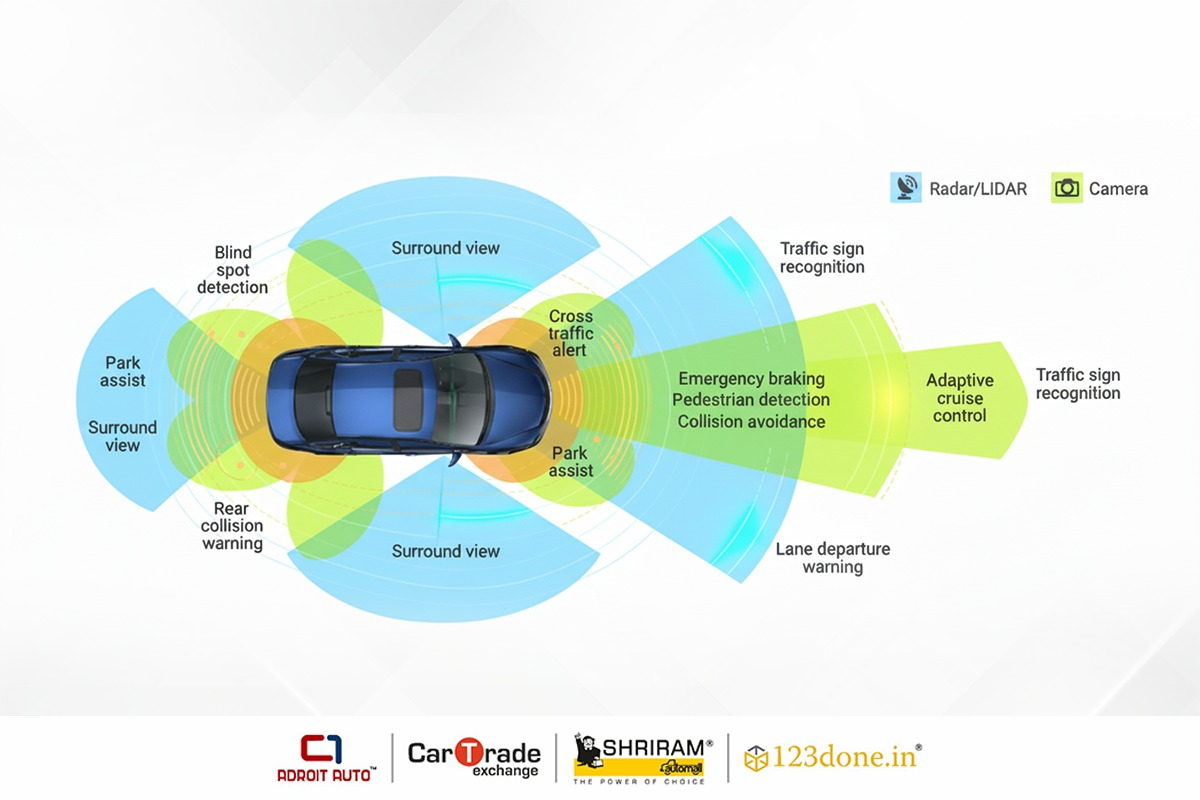What is ADAS? Advanced Driver Assistance Systems Explained – Features & Working

The Advanced Driver Assistance Systems, or ADAS, are a collection of systems that help alert the driver when any danger is near. Human errors are a major cause of accidents in vehicles; this can be avoided by understanding the operation of Advanced Driver Assistance Systems. ADAS helps prevent injuries and even deaths by incorporating the latest interface standards and algorithms to support real-time and sensor fusion systems. This blog will further reveal what ADAS is and how it works.
What is ADAS?
Advanced Driver Assistance Systems (ADAS) utilize technology that includes sensors, cameras, and radar to help drivers by monitoring the vehicle’s surroundings for hazards and providing necessary assistance. Real-time data is collected to post warnings and take automatic action, like applying brakes or steering, to prevent accidents and improve the safety of the people inside the vehicle.
Working of ADAS
Understanding the working of ADAS is of utmost importance if you drive vehicles. The Advanced Driver Assistance Systems reduce the number of car accidents. There are various chips in the vehicle known as systems on a chip (SoCs). These chips are connected to sensors, and the sensors are connected to actuators through interfaces and high-performance electronic controller units (ECUs).

Features of ADAS
Certain features of advanced driver assistance systems make it important for the vehicles. Let us look at those applications of ADAS:
Adaptive Cruise Control
The ADAS helps automatically adjust the vehicle’s speed to maintain a safe distance from the car up ahead.
Automatic Emergency Braking
The ADAS can apply automatic brakes in time of any emergency. This helps reduce the severity of an impact or major mishap.
Lane Departure Warning
The ADAS helps in alerting the driver if the vehicle starts drifting out of the lane without the turn signal activation.
Blind Spot Monitoring
The ADAS helps warn the driver of any vehicles in the blind spots of the vehicle.
Parking Assistance
The ADAS has sensors that help while parking the vehicle by providing alerts or even controlling the steering.
Traffic Sign Recognition
The ADAS reads and displays traffic signs on the dashboard for clarity.
Night Vision
The ADAS enables the drivers to see things that are difficult to see at night. The active system projects infrared light, and the passive system relies on the thermal energy.
5G & V2X
This advanced 5G ADAS feature enables your vehicle to seamlessly communicate with other vehicles and even pedestrians in real time, ensuring faster responses and greater reliability, a technology known as V2X (Vehicle-to-Everything).
Driver Monitoring System
The ADAS helps ensure the driver stays focused on the road. Using camera sensors, it tracks eye movements to detect whether the driver’s attention is on the road or starting to drift.
Conclusion
Advanced Driver Assistance Systems, ADAS, are truly revolutionizing vehicle safety features by the use of sensors, cameras, radars, and 5G-enabled V2X communication. This system creates a link between the driver and the road to ensure the safety of the people riding the vehicle. Understanding the working of ADAS is important as it reduces the number of accidents which are caused by human error by using various safety features. ADAS continues to integrate advanced technology for a more reliable and safe driving experience.
Frequently Asked Questions (FAQs)
1. What is ADAS in cars?
ADAS, or Advanced Driver Assistance Systems, are smart technologies in cars that use sensors, cameras, and radar to help drivers stay safe. They detect potential hazards, warn the driver, and can even take automatic actions like braking or steering to prevent accidents.
2. How does ADAS work in vehicles?
ADAS works by collecting real-time data from sensors and cameras installed around the vehicle. This data helps the system monitor surroundings, detect risks, and support the driver with features like adaptive cruise control, lane departure warning, and automatic emergency braking.
3. What are the main features of ADAS?
Some of the key features of ADAS include adaptive cruise control, lane departure warning, blind spot monitoring, parking assistance, traffic sign recognition, night vision, and driver monitoring systems. These features work together to enhance vehicle safety and reduce human error.
4. Why is ADAS important for road safety?
ADAS plays a crucial role in preventing accidents by improving driver awareness and reaction time. It helps detect dangers early, assists in controlling the vehicle, and ensures safer driving conditions, making roads safer for everyone.

 Download Our App
Download Our App



